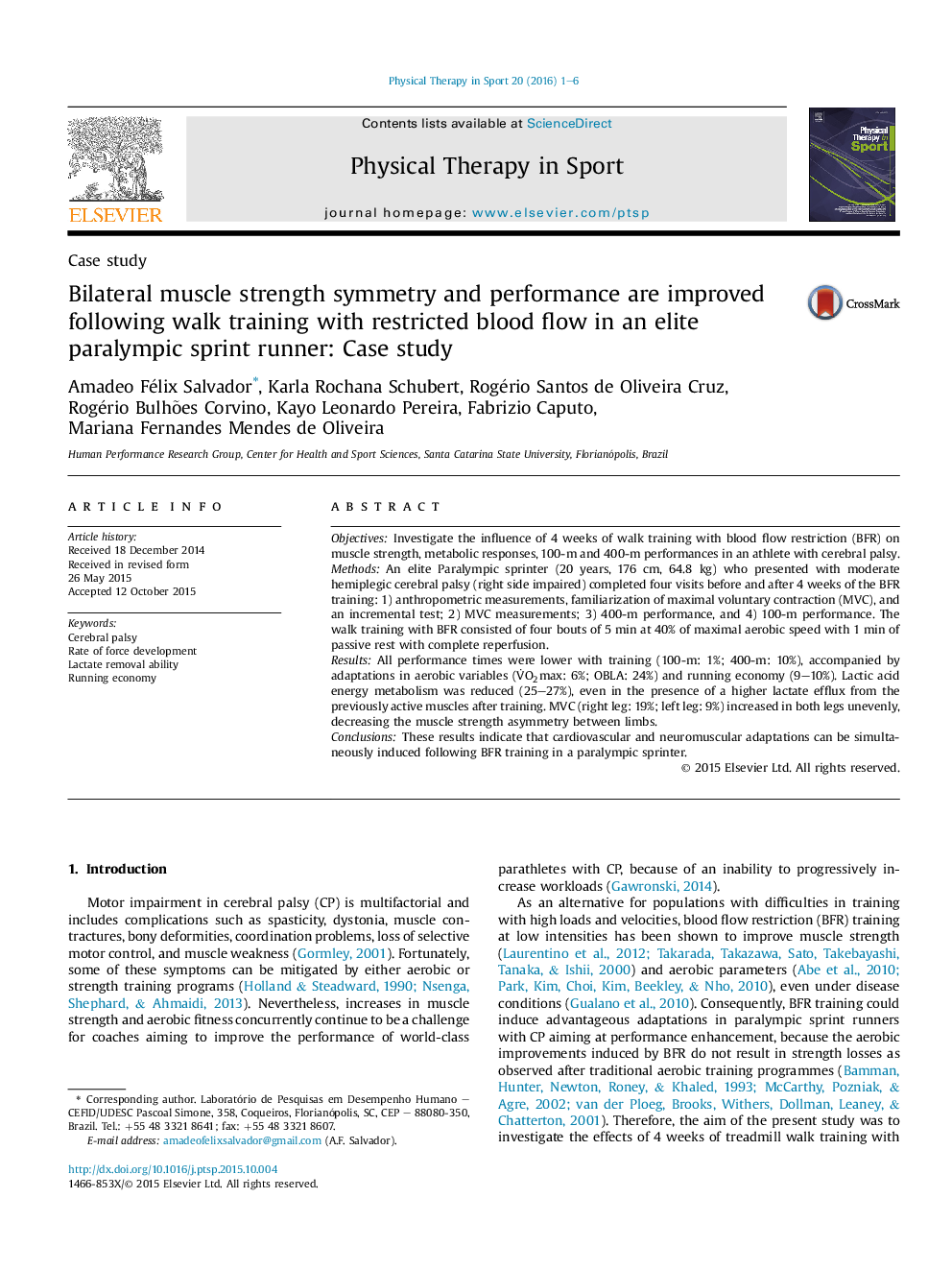| Article ID | Journal | Published Year | Pages | File Type |
|---|---|---|---|---|
| 2709738 | Physical Therapy in Sport | 2016 | 6 Pages |
•Blood flow restriction training increased 400-m performance in Paralympic sprinter.•Blood flow restriction training increased strength and aerobic parameters simultaneously.•Lactic acid energy metabolism was reduced after Blood flow restriction training.•Blood flow restriction training improved bilateral strength symmetry in Paralympic sprinter.
ObjectivesInvestigate the influence of 4 weeks of walk training with blood flow restriction (BFR) on muscle strength, metabolic responses, 100-m and 400-m performances in an athlete with cerebral palsy.MethodsAn elite Paralympic sprinter (20 years, 176 cm, 64.8 kg) who presented with moderate hemiplegic cerebral palsy (right side impaired) completed four visits before and after 4 weeks of the BFR training: 1) anthropometric measurements, familiarization of maximal voluntary contraction (MVC), and an incremental test; 2) MVC measurements; 3) 400-m performance, and 4) 100-m performance. The walk training with BFR consisted of four bouts of 5 min at 40% of maximal aerobic speed with 1 min of passive rest with complete reperfusion.ResultsAll performance times were lower with training (100-m: 1%; 400-m: 10%), accompanied by adaptations in aerobic variables (V˙O2max: 6%; OBLA: 24%) and running economy (9–10%). Lactic acid energy metabolism was reduced (25–27%), even in the presence of a higher lactate efflux from the previously active muscles after training. MVC (right leg: 19%; left leg: 9%) increased in both legs unevenly, decreasing the muscle strength asymmetry between limbs.ConclusionsThese results indicate that cardiovascular and neuromuscular adaptations can be simultaneously induced following BFR training in a paralympic sprinter.
